Year End 2023
It’s that time of year again. I still haven’t shaken the sense of obligation, so once more I’ll try to offer a brief summary of what I’ve seen in the past twelve months and what stands out – not, I hasten to add, the “best”, but rather what left an impression.
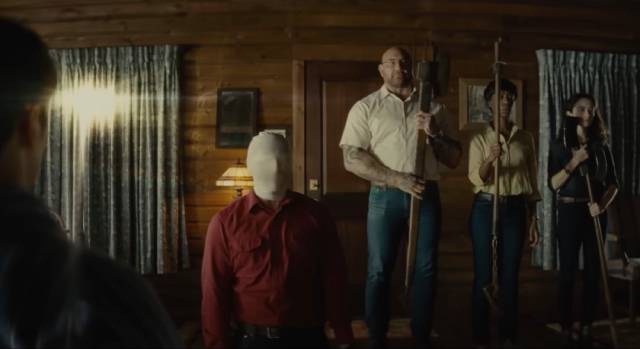
Theatre
Looking back, I find that I actually went to see ten movies in a theatre in 2023, up from a total of seven over the previous four years. Certainly not a return to my old form, and perhaps merely a reflection that post-Covid exhibition has begun to offer something more interesting again. Which is not to say that all ten movies were stellar entertainment – and one was actually a one-night only screening of a feature I edited two decades ago, given a limited cross-Canada tour thanks to local producer David Zellis who has been working diligently to exhume Canadian features from obscurity (he was a driving force behind the restoration of Gerald Potterton’s The Rainbow Boys [1973] back in 2022).
That was Jeff Erbach’s The Nature of Nicholas (2002). I was wary of seeing it again after so long, but found it perhaps more relevant now than when it was made, though Jeff’s low-key approach somewhat underdramatizes the material, keeping it more at the level of a thesis than a fully-developed narrative. But the theme of an adolescent boy struggling with issues of gender and identity reflects current debates more pointedly now; twenty-odd years ago it seemed more abstract, the use of zombie tropes not fully engaging with the thesis, but on this viewing it seemed more coherent to me. And watching it again, I appreciated nuances in the performances which I had forgotten and I was relieved not to find my own work embarrassing.
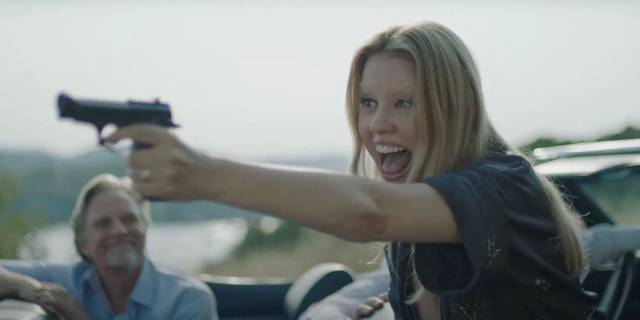
For the rest, I found Brandon Cronenberg’s Infinity Pool frustrating, M. Night Shyamalan’s Knock at the Cabin marred by its ending, Fast 10 an overblown cheat which spends two-and-a-half hours setting up a sequel. I was surprised to find how much I enjoyed John Wick 4, despite the silly mythology of the series; Chad Stahelski displays exemplary skill in staging, shooting and editing protracted action sequences which achieve a deliriously exhilarating intensity rare in more recent movies. I’m afraid the same can’t be said for John Woo’s return to Hollywood after fifteen years back in China making movies which, apart from the epic Red Cliff (2008-09), don’t seem to have gotten much distribution in the West: Silent Night is a gimmicky thriller which is sunk by sloppily executed action scenes and a really tedious protagonist, a man who wallows in drunken self-pity for a year before setting out to destroy the gang whose stray bullets killed his young son and destroyed his own vocal chords. It takes forever for the guy to pull himself together, but even then his revenge seems poorly thought-out and succeeds more through chance than design. That the entire movie is devoid of dialogue makes it even more tedious, rather than clever – and a white guy taking on murderous Chicano gangs in L.A. with righteous fury feels more than a little racist.

Wes Anderson’s Asteroid City is the most Wes Anderson-ish movie Wes Anderson has ever made and predictably got the usual mixed response from critics and audiences. Personally, I loved almost every minute, finding the refinement of all his usual directorial quirks – the deadpan performances, the synthetic design, the precocious kids and clueless adults, the plethora of verbal and visual nonsequiturs which evoke not only the entire body of Anderson’s work but also classic Warner Brothers cartoons – delightfully satisfying.
Ari Aster’s Beau Is Afraid begins as a nightmare of comic paranoia, but grinds on interminably through a series of acts which become repetitive and increasingly obscurely “symbolic”, all in the service of a trite resolution in which we learn that overbearing mothers inevitably cripple their sons psychologically. This resurrection of ’50s fear-mongering about the damage strong women do to poor vulnerable men leaves an unpleasant aftertaste.
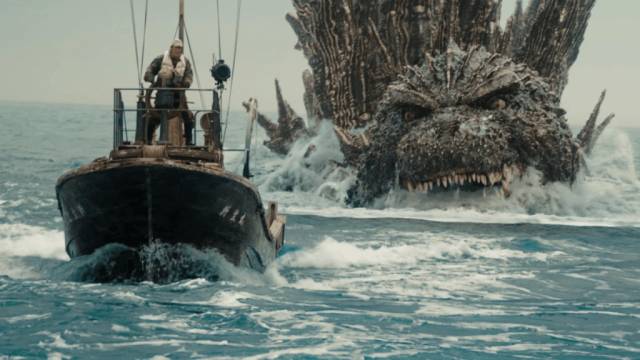
I ended the year with a pair of new Japanese releases. Takashi Yamazaki’s Godzilla Minus One returns to the big G’s origins in the years immediately following the end of World War Two, but roots its story in the experiences of ordinary Japanese people struggling to emerge from the defeat of their country as they come to terms with the horrors they were also a part of. The protagonist is a kamikaze pilot who is haunted by his inability to sacrifice himself in the final days of the war; in the ruins, he meets a young woman who has saved a baby girl and they form a family by chance which is threatened when U.S. nuclear tests awaken the angry reptile from the ocean depths. Huge, seemingly indestructible, armed with atomic breath, Godzilla attacks Japan, which is largely defenceless as Cold War tensions hamper America’s ability to mobilize against the threat. An informal group of scientists, ex-navy men and pilots have to come up with a plan to save Japan from destruction once again. My one reservation is the odd design of G himself; I like the return to the cat-like head of the ’60s suit, but for some reason he’s been given massive hips and thighs and gigantic Godzilla clown feet – all rather distracting. And of course, the old monster suit and miniature landscapes have largely been replaced with CGI, but that’s unavoidable these days. Overall, this is a great return to Godzilla’s roots, as good as if not better than Shin Godzilla (2016), and a satisfying antidote to the overblown American intrusions into the franchise over the past decade.
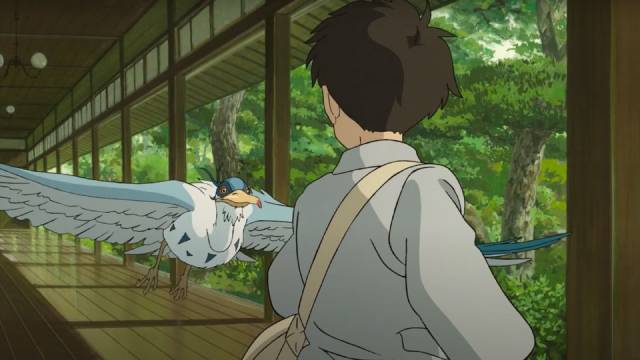
Hayao Miyazaki has returned yet again from retirement (for the fourth time?) with another epic animated feature, The Boy and the Heron. Now in his 80s, it’s not surprising to find the master working in a familiar register, drawing on elements from many of his earlier films – particularly My Neighbour Totoro (1988) and Spirited Away (2001), with a touch of The Wind Rises (2013). Once again we have a young character dealing with loss and grief, drawn into a realm of spirits where he comes to understand his own feelings and how he fits into the world. His mother having died during a fire-bombing raid, a boy moves with his father (manager of an aircraft plant) to a remote country location, where he meets his step-mother-to-be and, more importantly, a strange bird which leads him into a spirit world fraught with beauty and danger. As expected, the artwork is exquisite and the animation full of subtle touches (we see every blade of grass ripple when a breeze stirs through a meadow). And yet, for the first time I found the meaning of many details obscure – in the earlier films, everything clearly ties into the themes, but here on a first viewing I couldn’t work out the significance of, for instance, the parakeets which seem to form some kind of fascist army in the other world (though they become just ordinary birds again when they cross back into this world). The film is an absorbing visual spectacle, but I didn’t experience the kind of immersion I’m used to with Miyazaki’s films. I’ll watch it again to see if I missed something on this first encounter.
*
On Disk
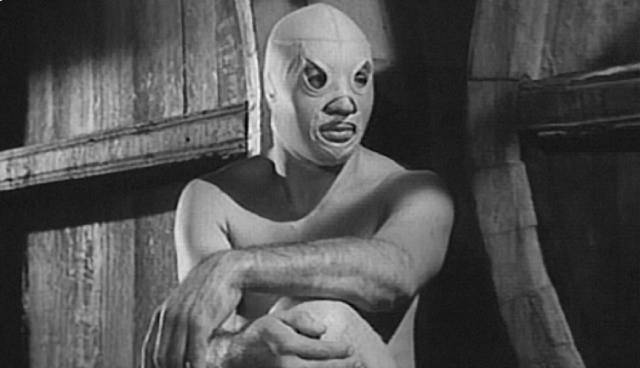
This past year saw a flood of impressive box sets which showcased some familiar movies but also brought to light a wide range of more obscure films. As has become customary, Indicator delivered quite a few sets, including a fifth (and final?) volume of films noirs from Columbia (devoted to Humphrey Bogart) and a second collection of noirs from Universal. Less obvious choices included the two-disk Enter Santo, which restored the first two low-budget productions starring the famous masked wrestler along with a fascinating documentary by Viviana Garcia-Besné about her family’s decades-long role in Mexican film exhibition and production. Later in the year, Indicator released Mexico Macabre, a collection of four features from the Gothic resurgence of the late-’50s and early ’60s. On a minor note, the company released a pair of Robin Hood features produced by Hammer in the ’60s, both aimed at a young audience familiar with the character from a long-running television series.
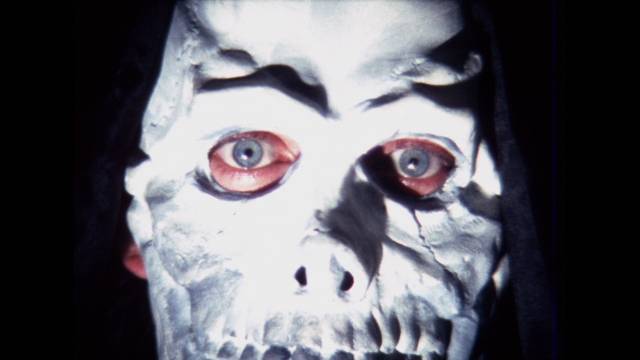
Indicator’s most impressive feats of resurrection, though, were their massive sets devoted to British “amateur” filmmaker Michael J. Murphy, a remarkably prolific industry outsider whose ambition pushed against material limitations with a cheerful determination which spanned five decades from his teens right up to his death in 2015, and the Ormond family, who began producing B-movies in the late ’40s, turned to exploitation in the ’50s and ’60s and ended up making scare-mongering Christian fundamentalist propaganda in the ’70s and ’80s. But to top things off, Indicator capped the year with the release of The Criminal Acts of Tod Slaughter, a collection of eight blood-and-thunder melodramas from the 1930s, which somewhat to my surprise immediately became my favourite release of the year – about which I have yet to write, the delay due to my currently reading Mr Murder by Denis Meikle, Kip Xool and Doug Young, the biography of Slaughter published in 2019. Having enjoyed this larger-than-life character’s work so much, I want to make sure I do him justice when I write my review.
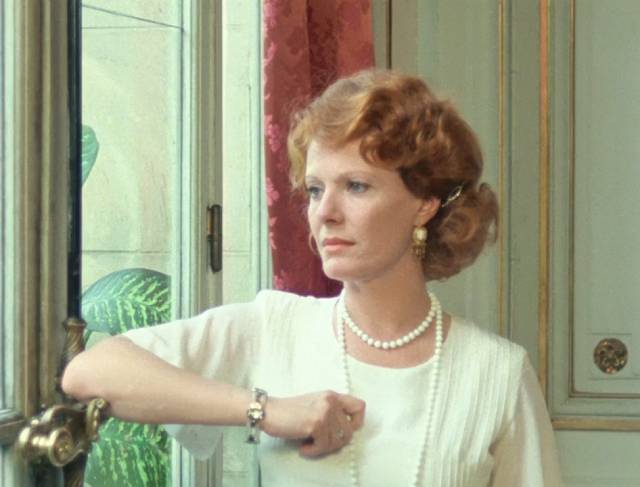
Not surprisingly, a few Criterion sets were less outre than these – Steve McQueen’s ambitious Small Axe, Bo Widerberg’s New Swedish Cinema, with Marguerite Duras’ India Song and Baxter, Vera Baxter being perhaps the most experimental – but nonetheless all rewarding examples within their particular contexts. Lars Von Trier’s Europe Trilogy is less mainstream, but still plays with recognizable genre elements. I did also pick up Criterion’s two-disk set of Tod Browning movies spanning the transition from silent to sound, but haven’t had time to get to it yet.
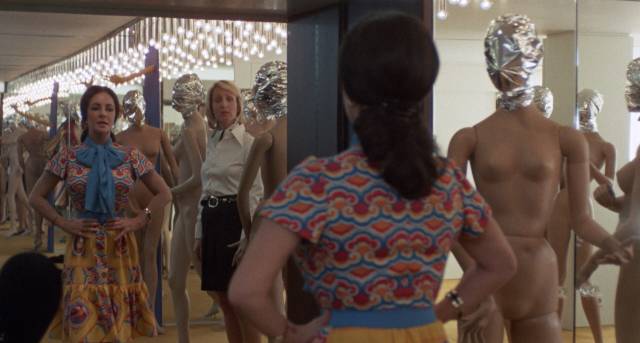
Severin released a few enjoyable sets this year, with an emphasis on Italian genre cinema. There was Violent Streets, with five poliziotteschi collaborations between director Umberto Lenzi and star Tomas Milian, and Danza Macabre volume one, a collection of minor Gothic features from the ’60s and early ’70s. The highlight of The Devil’s Game, a series of six Gothic adaptations for Italian television, was La venere d’Ille, the final film by Mario Bava (collaborating with his son Lamberto). House of Psychotic Women included two Italian movies – Giuseppe Patroni Griffi’s Identikit (The Driver’s Seat, 1974) and Luigi Bazzoni’s Le Orme (1975) – along with the Polish I Like Bats (Grzegorz Warchol, 1986) and the British The Other Side of the Underneath (Jane Arden, 1972). There was also Cushing Curiosities, a six-disk set of films and television episodes from the fringes of Peter Cushing’s career, similar to the two previous Eurocrypt of Christopher Lee sets; except for the six surviving episodes of the BBC’s Sherlock Holmes series with Cushing in the title role, the actor mostly has peripheral parts in the five features in the set, the best being three black-and-white films from the early ’60s – Charles Frend’s Cone of Silence, John and Roy Boulting’s Suspect and Quentin Lawrence’s The Man Who Finally Died. Robert Hartford-Davis’s Blood Suckers is an interesting mess and Pierre Grunstein’s Tender Dracula is a tediously unfunny French comedy in which Cushing played a vampire for the one and only time.
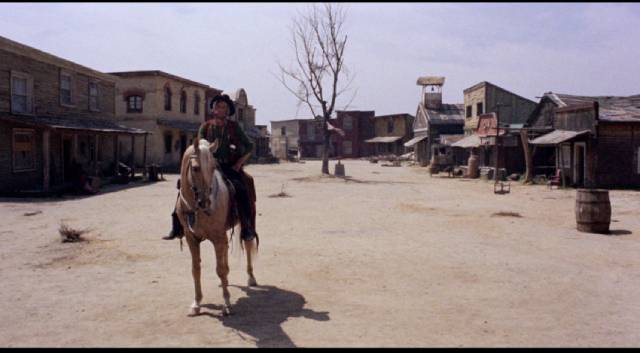
Arrow finally got around to following up their 2021 release of Vengeance Trails with another set of four spaghetti westerns, Blood Money, during the summer, followed relatively quickly by volume three, Savage Guns, in early December. They also had a welcome release with a set of Takashi Shimizu’s Ju-On movies – this included the original pair of V-cinema productions as well as the bigger-budgeted theatrical remakes and the later pair of video productions Ju-On: Black Ghost and Ju-On: White Ghost, but not Shimizu’s two U.S. remakes, The Grudge 1 and 2. There was also an elaborately packaged collection of Empire Pictures releases from the ’80s called Enter the Video Store.
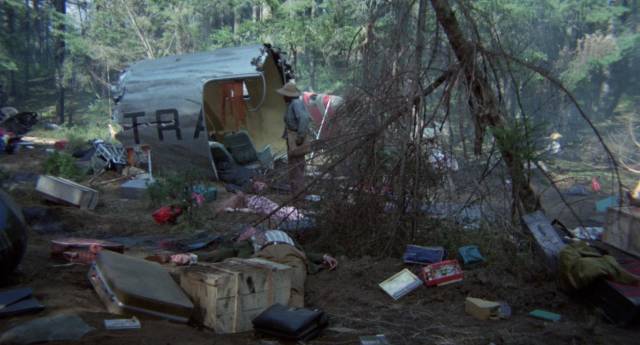
Although Vinegar Syndrome’s second set of movies by the prolific Rene Cardona was a bit of a mixed bag, in some ways more interesting than the first set’s bigger-budgeted U.S.-oriented movies, the company provided a real service to viewers by releasing a set of three features by Carlos Enrique Taboada, a Mexican filmmaker previously unknown to me. An air of horror runs through films which range from the acutely observed stresses of rural poverty in Rapiña (1975) to the twisted psychology of children in a boarding school in Poison for the Fairies (1986). An interesting companion set of three Spanish movies, Villages of the Damned, is marred by the inclusion of Silvio Narizzano’s truly dire The Sky Is Falling (1975), but the two period Gothics – Pedro Olea’s El bosque del lobo (1970) and Gonzalo Suarez’s Beatriz (1976) – are both very good.
Finally, I’ve continued to enjoy Network’s hefty Edgar Wallace Mysteries set – with four disks and eleven movies still to go.
*
This year, I’ve added releases from a number of newer companies to my library, the ever-expanding sources continuing to prove that physical media won’t be disappearing any time soon. I’ll mention a few releases from each company, perhaps singling out one in particular to provide a snapshot of the year, starting with the more established labels.
Criterion
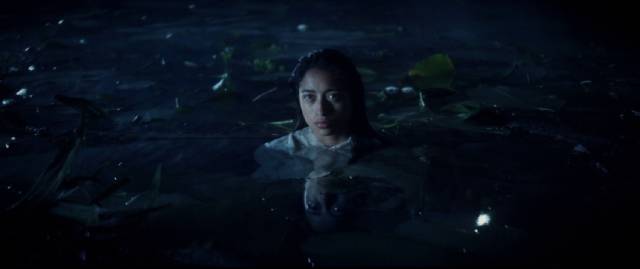
Although Criterion often seems to make relatively safe choices, they still offer a fairly wide range of movies from different periods and countries and this year they released fine editions of American independent features such as Allen Baron’s Blast of Silence (1961), Joan Micklin Silver’s Chilly Scenes of Winter (1979) and Carl Franklin’s One False Move (1992) along with an excellent restoration of Orson Welles’s The Trial (1962), Joseph Losey’s The Servant (1963), Seijun Suzuki’s Branded to Kill (1967) and Claude Chabrol’s La cérémonie (1995).
But the highlight for me was Jayro Bustamante’s La llorona (2019), in which the folk legend of the crying woman is used as a way into a devastating treatment of the lingering trauma inflicted on Guatemala by the genocidal horrors of a civil war which lasted from 1960 to 1996, with a right-wing dictatorship decimating indigenous peoples under the guise of “fighting communism”. On its surface cool and formally elegant, Bustamante’s film builds inexorably to an emotionally intense expression of pain and anger.
BFI
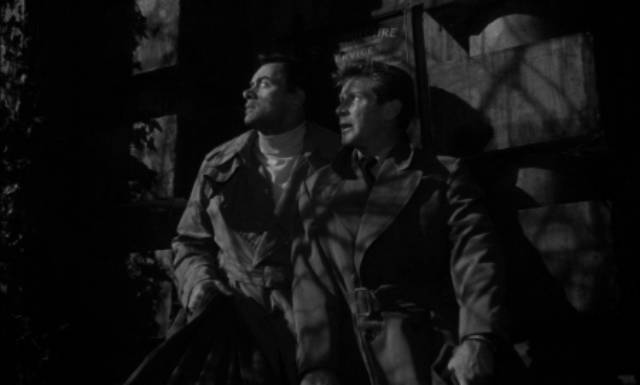
I’m still waiting for the arrival of a batch of this year’s BFI releases – Ken Russell’s Gothic, Pat Jackson’s Western Approaches, Nina Menkes’s Brainwashed: Sex-Camera-Power, Bill Forsyth’s Gregory’s Girl, Michael Powell’s Bluebeard’s Castle and the third volume of Short Sharp Shocks – but did already watch Powell and Pressburger’s One of Our Aircraft Is Missing (1942) and Richard Loncraine’s Full Circle (aka The Haunting of Julia, 1977), but perhaps the most interesting (if not best) BFI release I saw this year was an older disk (from 2020), Lewis Gilbert’s The Good Die Young (1954), which like Gilbert’s Cosh Boy (1953) blends elements of film noir with melodrama to evoke the social disruptions of the post-war years as Britons struggled to rebuild society in the midst of deprivation and feelings of resentment about the failure of a promised better world to materialize following victory.
Arrow
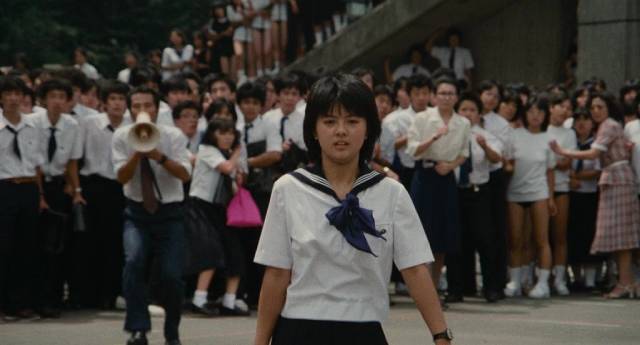
I watched a lot of new and older Arrow releases this year, with highlights being their editions of Mike Hodges’ Croupier (1998) and David Cronenberg’s Crash (1996). Also interesting, if not entirely successful, were Mark O’Brien’s The Righteous (2021) and John Mackenzie’s Unman, Wittering and Zigo (1971). There were fine new editions of Daniel Haller’s The Dunwich Horror (1969) and John Frankenheimer’s Black Sunday (1977), plus a two-disk set of Toru Murakawa’s The Game Trilogy (1978-79).
But perhaps the most interesting discovery from Arrow this year was Shinji Somai’s Sailor Suit and Machine Gun (1981), a continually surprising mash-up of yakuza tropes and the Japanese fetishization of schoolgirls in sailor suit uniforms; the story of a rebellious teen girl who, through a series of odd circumstances, finds herself the head of a minor family of rather ineffectual gangsters plays its absurdity disconcertingly straight. The girl (played by pop star Hiroko Yakushimaru) earns the loyalty of the gangsters as she asserts the family’s power against much stronger gangs.
Indicator
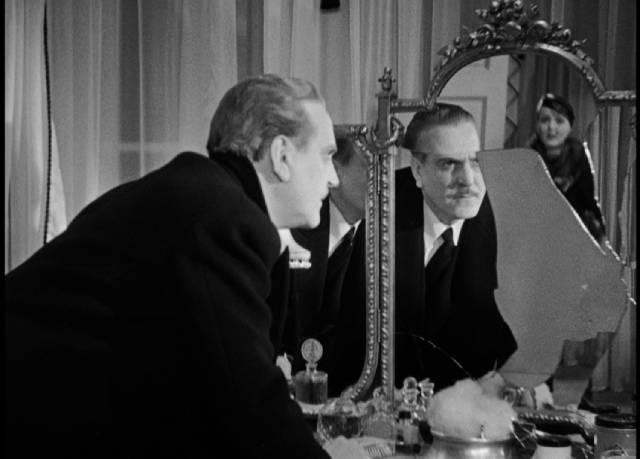
Indicator continues to be one of the best disk producers in the world, their releases offering exemplary transfers and copious special features, making each a valuable contribution to film history. This year has seen them lavish attention on some lesser-known Hollywood classics (Ernst Lubitsch’s Bluebeard’s Eighth Wife, James Whales’s The Kiss Before the Mirror), a group of Euro exploitation titles (six Jean Rollin movies so far, plus Enzo G. Castellari’s Cold Eyes of Fear and Renato Polselli’s Black Magic Rites), westerns (Sergio Sollima’s The Big Gundown, Robert Totten and Don Siegel’s Death of a Gunfighter), noir romance (Mitchell Leisen’s Remember the Night), Anthony Harvey’s oddity They Might Be Giants, John Huston’s Freud, and Hubert Cornfield’s The Night of the Following Day, an old favourite of mine.
Whales’s The Kiss Before the Mirror may have come as the biggest revelation, providing a new perspective on a filmmaker so familiar from his classic horror movies. This domestic melodrama mixes rampant misogyny with startling pre-Code sexual frankness, leavened with touches of Whales’s acerbic wit and suggestions of lesbianism. While its retrograde attitudes seem problematic today, it displays the kind of adult attitudes which flourished in the late-silent and early-sound eras before industry self-censorship attempted to drive sexuality underground for several decades.
Radiance
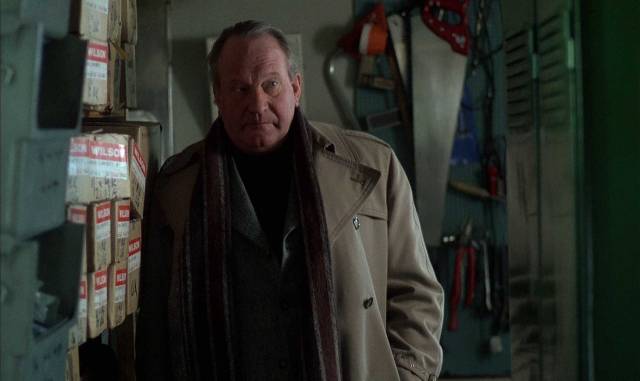
Radiance is a new company with a similar approach to Indicator – interesting selection of newer and older titles, a range of genres, wide range of national cinema cultures. My first encounter with them was Jean-Denis Bonan’s experimental feature A Woman Kills (1968); since then I’ve acquired Ann Hui’s Visible Secret, Pasquale Squitieri’s The Iron Prefect, the three-disk Cosa Nostra set of collaborations between director Damiano Damiani and star Franco Nero, Giorgio Ferroni’s The Night of the Devils, Riccardo Freda’s The Horrible Dr. Hichcock, Willard Huyck and Gloria Katz’s Messiah of Evil and Gordon Hessler’s Scream and Scream Again. Two highlights, though, are Bo Widerberg’s adaptation of Maj Sjöwall and Per Wahlöö’s Martin Beck police procedural Man on the Roof (1971) and Kôsaku Yamashita’s Big Time Gambling Boss (1968), a film which forms a bridge between the classic, romanticized yakuza movie and the bleaker political and social realism of the genre as filmmakers like Kinji Fukasaku deconstructed it in the ’70s.
Eureka
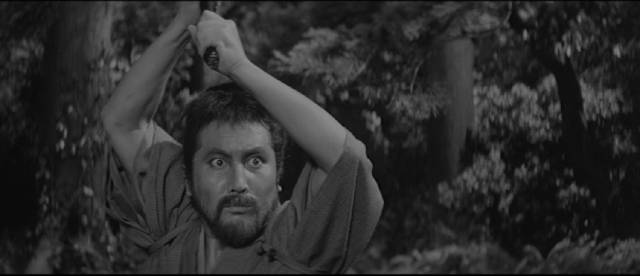
Most of my Eureka acquisitions this year have been Asian movies, including quite a few involving Sammo Hung ranging from traditional martial arts, often with a comic edge, to horror comedies and contemporary action comedy. A collection of four sequels to the Sammo-produced Mr. Vampire was uneven but entertaining, while Jun’ya Satô’s The Bullet Train and Golgo 13 provided more straightforward contemporary action and suspense. A pair of very different samurai movies were particular highlights – Tadashi Imai’s Revenge (1964), which deconstructs the bushido code which governed the Japanese feudal order for centuries, and Kinji Fukasaku’s Samurai Reincarnation (1981), which combines samurai action with the historical repression of Christianity in Japan, adding a strong dose of supernatural horror to make this one of Fukasaku’s most entertaining movies.
88 Films
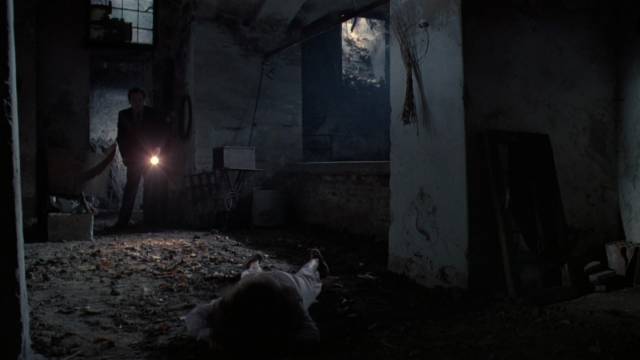
88 Films also released a number of Asian action movies and fantasies, including a nicely restored edition of Lam Ngai-Choi’s demented Riki-Oh: The Story of Ricky (1991), along with Lam’s horror-comedy The Seventh Curse (1986), which featured Chow Yun-Fat just before he became a major star. Ching Sun’s Human Lanterns (1982) grafted horror onto familiar martial arts elements, creating something akin to the perverse period films of Teruo Ishii, while Ronny Yu’s The Postman Fights Back (1982) situates martial arts action among warring factions during the Chinese Revolution and Herman Yau was a bit more subdued than usual with Taxi Hunter (1993), in which a grieving man takes revenge on Hong Kong’s exceedingly unpleasant taxi drivers. Along with these, the company provided upgrades of a number of Italian horror movies, including Bruno Mattei’s cheap Hell of the Living Dead (1980) and Rats: Night of Terror (1984), as well as Mario Bava’s The Whip and the Body (1963) and Hatchet for the Honeymoon (1970). As much as I appreciated these new, improved editions, the highlight for me was a superb edition of Pupi Avati’s Zeder (1983), a long-time favourite whose multiple previous releases were all compromised in some way.
Second Sight
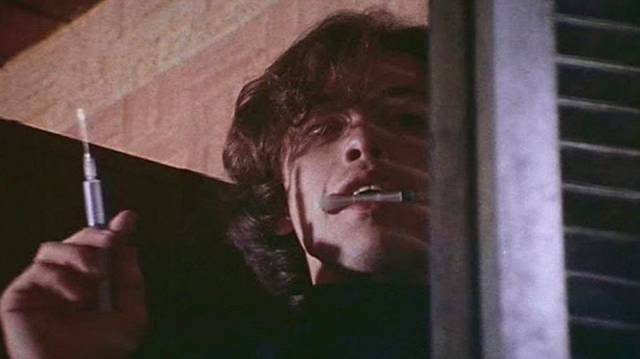
Second Sight is another company focusing on genre movies, carving out its own niche with elaborate special editions featuring new transfers, copious special features and substantial text extras. I picked up new editions of a number of titles already in my library, all well worth double-dipping: David Cronenberg’s Crimes of the Future, Brad Anderson’s Session 9, Neil Marshall’s Dog Soldiers, David Robert Mitchell’s It Follows, Lucky McKee’s May, Peter Weir’s Picnic at Hanging Rock. The only title I hadn’t already seen was Xavier Gens’ Frontiere(s), but the most significant release was a dual-format 4K UHD/Blu-ray set featuring a new restoration of George A. Romero’s masterpiece Martin (1976), a film still overshadowed by his better-known zombie movies, but richer, more complex and more personal.
Severin
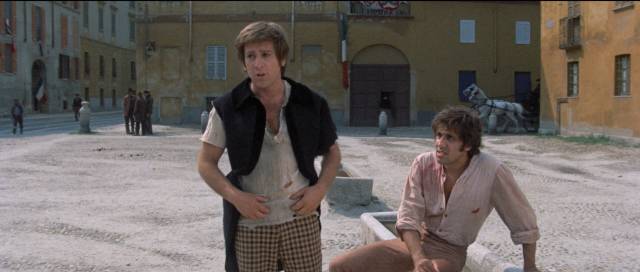
Severin has been a dependable source of genre film restorations for almost two decades and this year was no exception, with limited editions of Alex de la Iglesia’s first feature Accion Mutante (1993), Lucio Fulci’s The Psychic (1977), Romano Scavolini’s Nightmare (1981), David Winters’ The Last Horror Film (1982), Frank Henenlotter’s Bad Biology (2008), Sergio Martino’s mini-series Private Crimes (1993), Alain Jessua’s Les Chiens (1978) and Dario Argento’s Four Flies on Grey Velvet (1971). Although not the best movie, perhaps their most notable release was a deluxe edition of Argento’s little seen The Five Days (1973), a historical comedy which represents something like a path not taken by the filmmaker – elaborately mounted on a large scale, the leaden mix of violent history, politics and “comic” characters displays Argento’s skill with the logistics of production but lack of personal interest in the material. After this misfire, he returned to his core strengths with Deep Red (1975), but Severin did a fine job resurrecting this “lost” film for the director’s fans.
Vinegar Syndrome
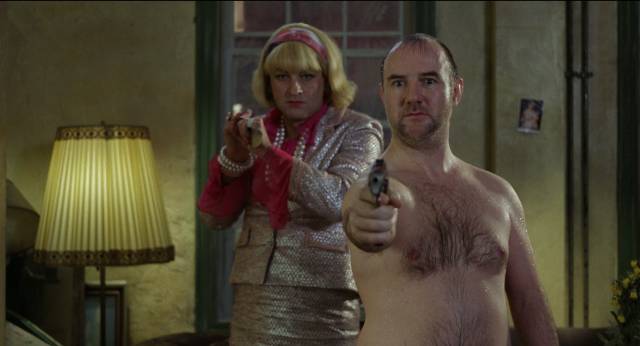
A perhaps larger than warranted slice of my viewing this year came from Vinegar Syndrome because I’d bought a subscription which guaranteed that a substantial package arrived every month, often containing items I might never have otherwise bought, but which I ended up watching anyway. Quite a few of these were literal timewasters (El violador infernal, Night Screams, Terror at Tenkiller, Fatal Games, Arnold, Mother’s Day, Rabid Grannies), but there were also some (minor) discoveries (Frostbiter, The Black Room, Evil Judgment, Magic Crystal, An Eternal Combat, Ghost Nursing) along with a few major upgrades – Lamberto Bava’s A Blade in the Dark, David Cronenberg’s Existenz, Eugène Lourié’s Gorgo, even Joel M. Reed’s Bloodsucking Freaks. Two very different highlights were Martin Walz’s Killer Condom (1996), an artful horror-comedy which makes some salient points about sexual prejudice via an absurdly entertaining story about the titular monster, and Todd Morris and Deborah Twiss’s A Gun for Jennifer (1997), a movie which perfectly emulates gritty rape-revenge movies from the ’80s with a self-aware feminist attitude.
Cauldron
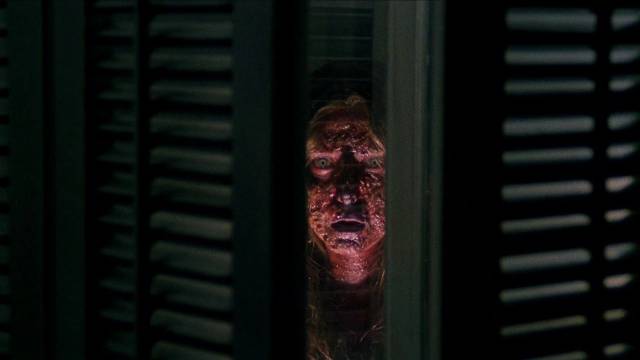
Cauldron had an uneven showing this year with a number of Italian genre movies. Their Blu-rays of Giuliano Carnimeo’s Rat Man (1988) and Ruggero Deodato’s Off Balance aka Phantom of Death (1987) were nice upgrades from the region 2 Shameless DVDs, but Fabrizio De Angelis’ The Last Match (1991) was a disappointment which made very little use of its central gimmick of a football team making an assault on a third-world prison to rescue a young woman framed for drug smuggling. Somewhat more entertaining was Nello Rossati’s Top Line (1988), with Franco Nero as a writer who stumbles on jungle treasure, fascists and a buried UFO while on a tropical assignment. But their big release for the year was a three-disk dual-format 4K UHD/Blu-ray edition of Lucio Fulci’s City of the Living Dead (1980), a movie I enjoy more each time I watch it.
Imprint
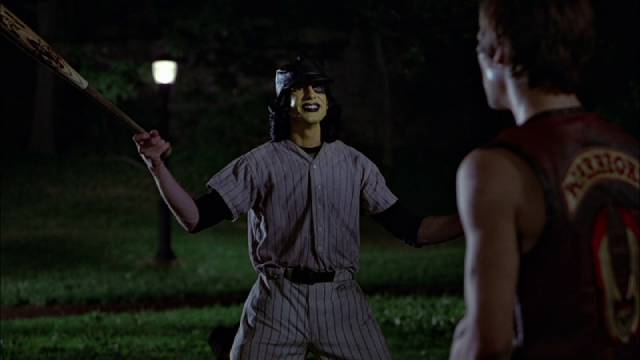
Imprint is another relatively new company, this time from Australia, and they’ve been releasing special editions of movies which have long been missing in action in North America and the U.K. Along with minor genre titles like Lesley Selander’s The Catman of Paris (1946) and Byron Haskin’s Conquest of Space (1955), they issued David Lynch’s The Straight Story (1999), Barbet Schroeder’s Barfly (1987), Mike Hodges’ I’ll Sleep When I’m Dead (2002), Gillo Pontecorvo’s Burn! (1969), but the one I was most pleased to see was their two-disk set of Walter Hill’s The Warriors (1979), which includes a restoration of the original theatrical cut, much preferred over the misjudged director’s cut which for too long remained the only option for the film’s fans. (Arrow have just released a comparable edition in the U.S.)
Umbrella
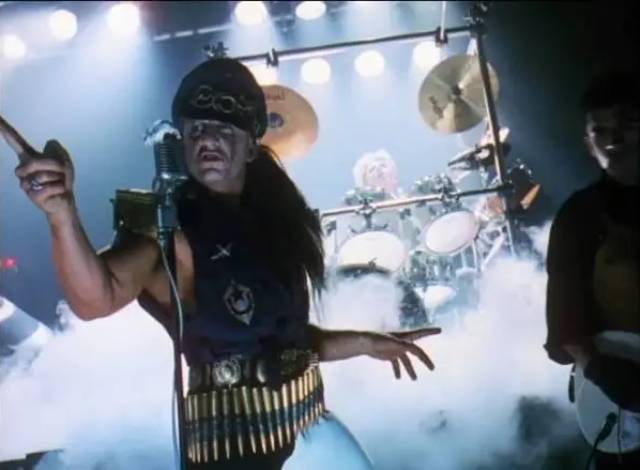
Umbrella Entertainment, Australia’s biggest movies-on-disk producer, has been around for more than two decades and continues to release a wide range of genre and exploitation movies. I picked up Brian Trenchard-Smith’s cheap-and-cheerful martial arts double-feature Day of the Panther and Strike of the Panther (both 1988), and a double-feature from Australia’s first horror auteur Terry Bourke of a pair of backwoods horrors, the contemporary Night of Fear (1972) and the period western Inn of the Damned (1975), in both of which unwary travellers fall foul of rural killers. Steve Jodrell’s Shame (1971) also delved into the dangers of isolated Outback communities, while Alex Proyas’s first feature Spirits of the Air, Gremlins of the Clouds (1987) used the Outback as a setting for a post-apocalyptic fairytale. The real find, though, was Gary L. Keady’s Sons of Steel (1988), a sci-fi-comedy-musical with a lively score and songs by star Rob Hartley.
ClassicFlix
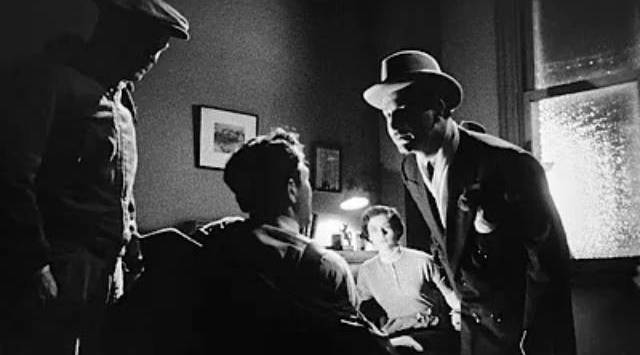
This year I dipped my toe into the catalogue of ClassicFlix, which is something like the U.S. equivalent of England’s Network, with an emphasis on old television shows and minor features from Golden Age Hollywood. I was able to replace my old DVD with a new, improved Blu-ray of Tay Garnett’s Stand-In (1937), and for the first time saw Orson Welles revelling in villainy as Cagliostro in Gregory Ratoff’s Black Magic (1949). I enjoyed a pair of wartime B-movies, Leslie Arliss’ The Night Has Eyes (1942) and Tim Whelan’s International Lady (1941), and the previously unknown, short-lived TV series World of Giants (1959), but what actually got me started with the label was the release of two films noirs based on Mickey Spillane novels, Victor Saville’s The Long Wait (1954), which has a great cast headed by Anthony Quinn involved in a story which complicates robbery and murder with amnesia and plastic surgery, and Harry Essex’s I, the Jury (1953), which adds some superb 3D cinematography by John Alton to a convoluted plot set in motion when an old friend of detective Mike Hammer is brutally murdered.
*
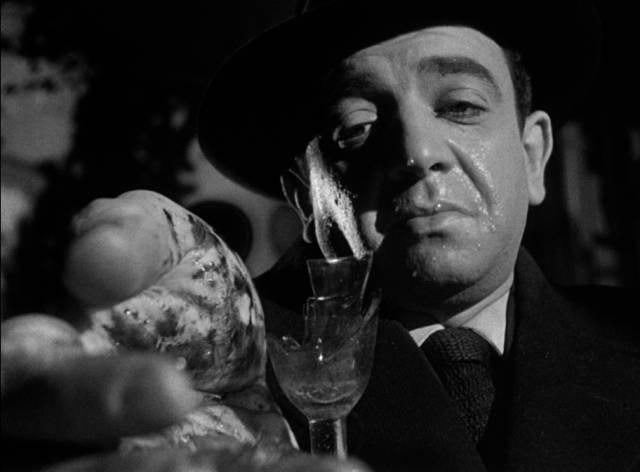
Other individual titles worth mentioning are:
Dusty Nelson’s Effects (1979), a self-aware slasher movie about a crew making a slasher movie who themselves become victims. (AGFA dual-format 4K UHD/Blu-ray with commentary and extras)
Román Viñoly Barreto’s El vampiro negro (1953), an atmospheric Argentinian reworking of Fritz Lang’s M (1931), beautifully restored by Flicker Alley, with commentary and substantial extras.
Something in the Dirt (2022), Justin Benson and Aaron Moorhead’s latest enigmatic feature, made during the pandemic, in which two neighbours in a Los Angeles apartment experience increasingly disturbing paranormal events. (XYZ Films Blu-ray with commentaries and extras)
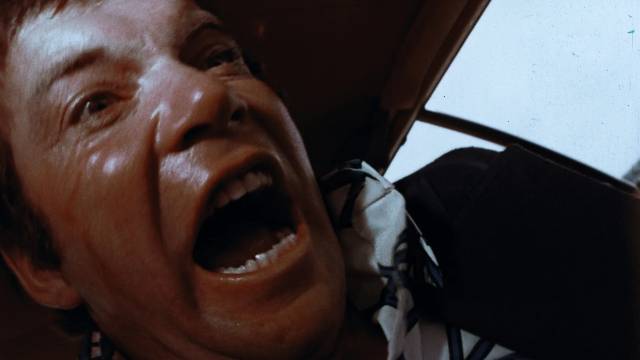
William Grefé’s Impulse (1974) received stellar treatment from Grindhouse Releasing, who restored this creepy serial killer melodrama starring William Shatner and packaged it with two more of the filmmaker’s movies and hours of special features.
Matthew Robbins’ Dragonslayer (1981) gets a 4K restoration from Paramount, finally delivering a transfer which does justice to this wonderful Medieval fantasy. (Blu-ray with commentary and extras)
Russell Mulcahy’s Razorback (1984) was sourced by Scream Factory from an earlier Umbrella 4K edition and the quality is excellent, supporting the hyper-stylized use of colour in this animal-menace classic. (Blu-ray with commentary and extras)
Alexandre O. Philippe’s The Taking (2021) is a dense essay film which explores the intersections between history and popular culture through the ubiquitous imagery of Monument Valley in Hollywood movies and advertising and the ways in which this appropriation of geography has erased the real history of colonialism and genocide which took place in this landscape. (Dekanalog Blu-ray with extras)
Comments